Starting seeds indoors during the cold and dark of winter might be one of the greatest joys for a gardener. It means that greener, sunnier times are coming. Starting seeds indoors isn’t difficult, but there are a few tricks of the trade. Here’s everything you need to know to start seeds indoors and care for your seedlings successfully.
Gather Supplies & Calendar
To start seeds indoors, you need a few basic supplies. You’ll need a shelf or table, containers, seed starting mix, lights, and a waterer. It’s easiest to have a good setup before you begin. You’ll also need to know the appropriate times to start seeds in your area. It’s a good idea to have or make a calendar for this.
Earlier in our basics series, we covered what you need to start seeds and when you should start seeds. Please refer to those posts for complete details.
Follow Planting Recommendations
When starting the seeds you purchased, follow the package instructions or the growing guide.
Look at planting depth. Some seeds need light to germinate, and you’ll need gently press them into the soil’s surface, while other seeds need to stay moist and dark, and you should plant them at 1/4 inch deep or more.
Try using the tip of a pencil to make holes in the seed starting mix for your seeds.
Consider additional requirements. Some varieties need a bit of extra attention before sowing. Watch for seeds that should be soaked overnight or stratified before planting.
If you have seeds you got from a friend or seed swap without directions, do a little digging about what that variety needs to thrive.
Keep Moist
Your containers should have drainage, and you should avoid over or under-watering. Seedlings should be kept moist but not soggy. If the roots sit in water, your plants will fail to thrive.
A pump-up water mister or sprayer can make watering much more effortless. Using a fine spray can help dislodge tiny seeds and seedlings, and you can swap to a larger traditional watering can as plants grow larger.
The larger your seedlings get, the more water they’ll use, so be sure to take extra care to check them as they grow. Using warm lights or heat maps can also increase your need for watering.
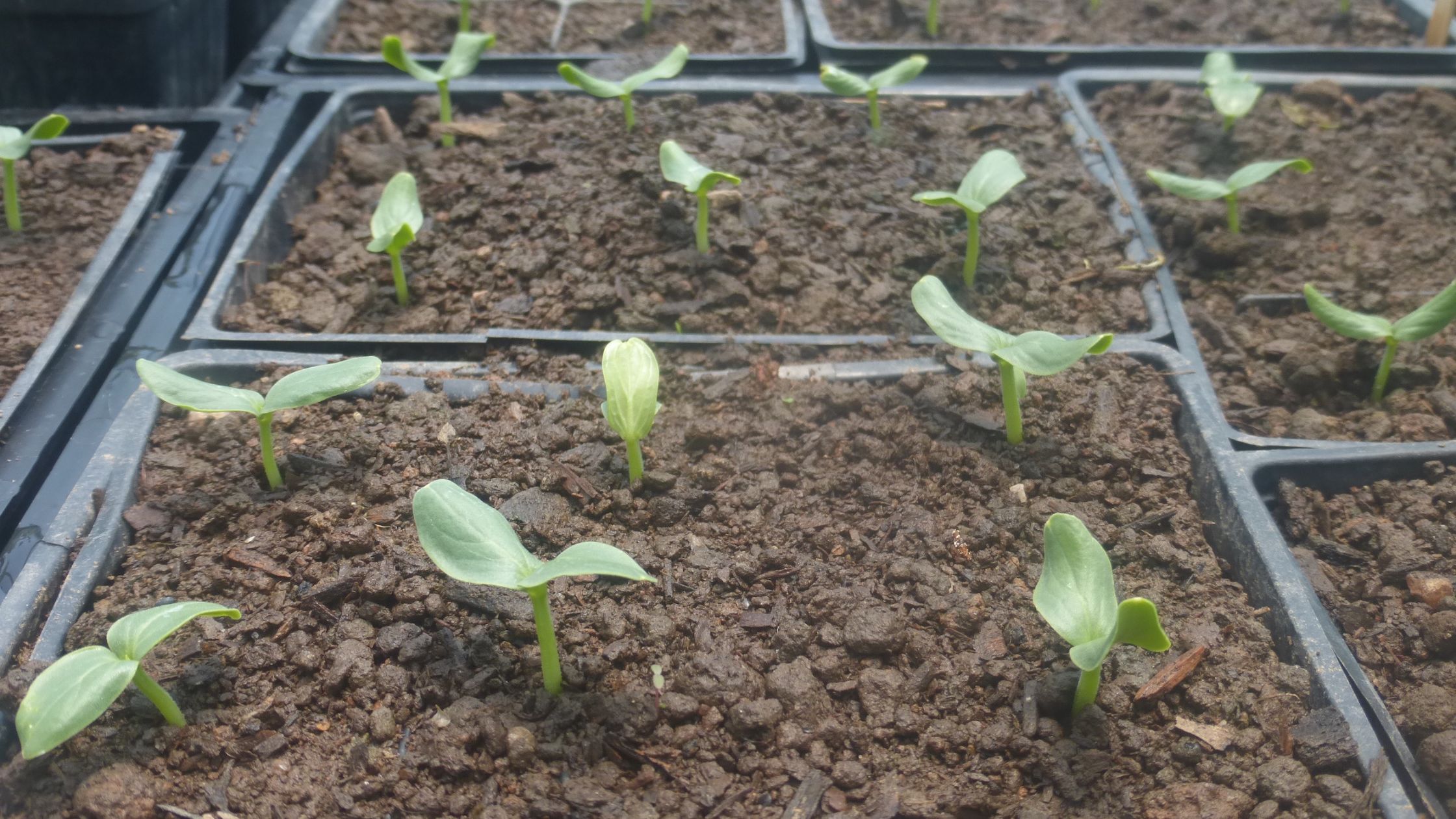 Adjust Lighting
Adjust Lighting
You’ll also need to adjust your lighting as your seedlings grow. As discussed in our previous post about supplies, you’ll need to provide your seedlings with auxiliary lights hanging above them.
Keep these lights 2 to 4 inches away from the tops of the seedlings. As your seedlings grow, you’ll want to raise them, so they don’t burn the tops of the plants. However, if you notice your seedlings getting tall and spindly, you should lower your lights.
Fertilize
Seed-starting mixes are great for starting seeds but only provide a few nutrients. If your seedlings grow in containers for an extended period, you’ll need to give them fertilizer.
The easiest way to give seedlings a boost is to add liquid fertilizer to the water. Liquid kelp is an excellent organic option, and just a tablespoon or two added to a gallon of water goes a long way. Some folks also choose to water with compost tea.
For liquid kelp or other purchased fertilizers, follow package instructions when available. You should cut the amount in half if the instructions are for mature plants.
Pot Up as Needed
Your seedlings may outgrow your containers before you’re ready to transplant them. It’s a good idea to have a few larger containers on hand, about an inch or two wider than the existing containers.
Potting up provides fresh soil and space. If left in small containers, seedlings can become root bound where the roots wrap around the inside of the pot, and can take longer to begin growing after you transplant them.
You should repot most seedlings so that the stem is at the same level as in the initial pot. Tomatoes can be repotted deeper, with soil covering the stem up to just below their leaves, as they will grow new roots from the stem.
It’s almost February! In the Southeast, we’re ready to start seeds indoors, and you probably are too. Follow these tips to start seeds indoors and care for them until spring for a bountiful garden in the coming season.


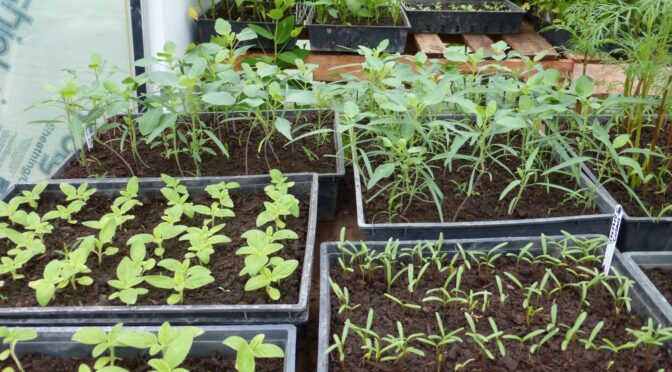
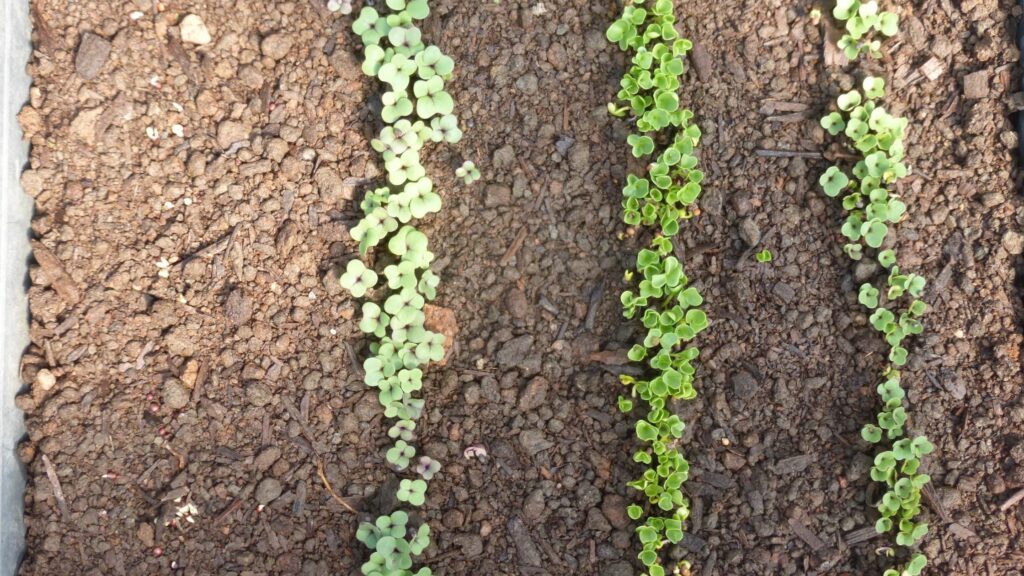 Starting Indoors: The Basics
Starting Indoors: The Basics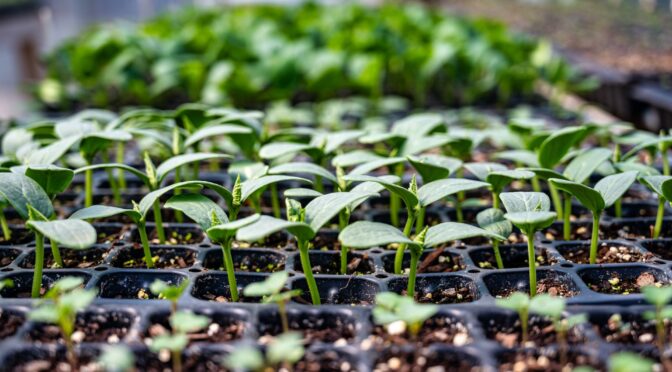
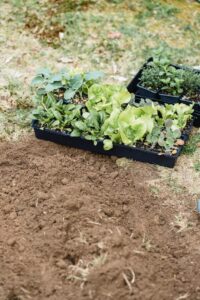 Many gardeners and farmers use a seed starting mix to sow seeds indoors. Seed-starting mixes have the advantage of being sterile, meaning your seedlings will be exposed to fewer bacterial and fungal issues while they’re first getting started. Seed-starting mixes also hold adequate moisture for seeds without getting soggy.
Many gardeners and farmers use a seed starting mix to sow seeds indoors. Seed-starting mixes have the advantage of being sterile, meaning your seedlings will be exposed to fewer bacterial and fungal issues while they’re first getting started. Seed-starting mixes also hold adequate moisture for seeds without getting soggy.